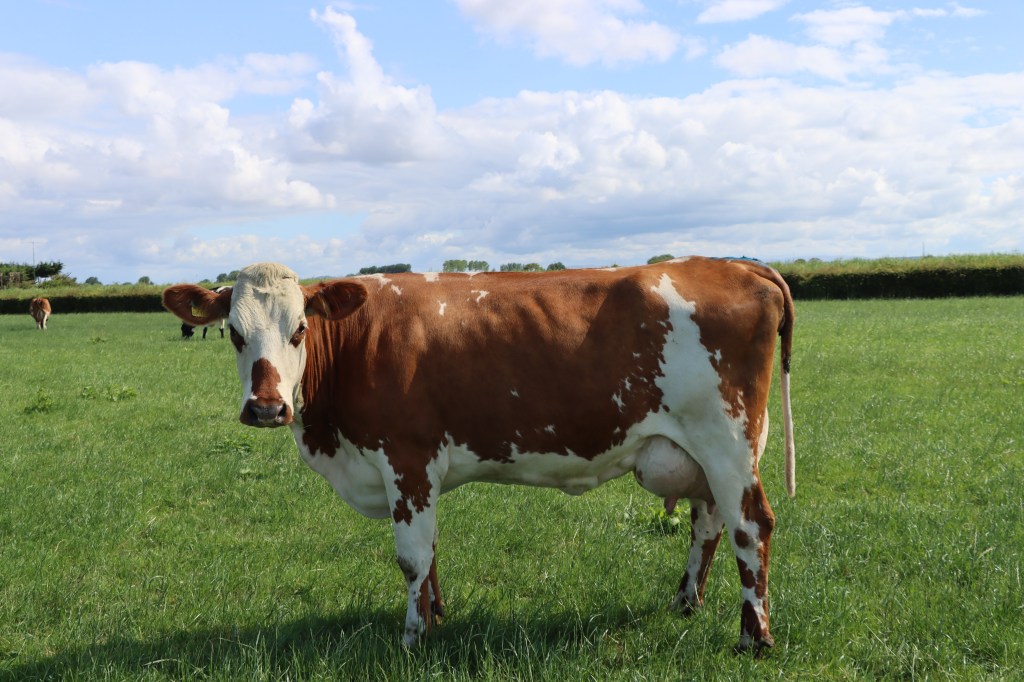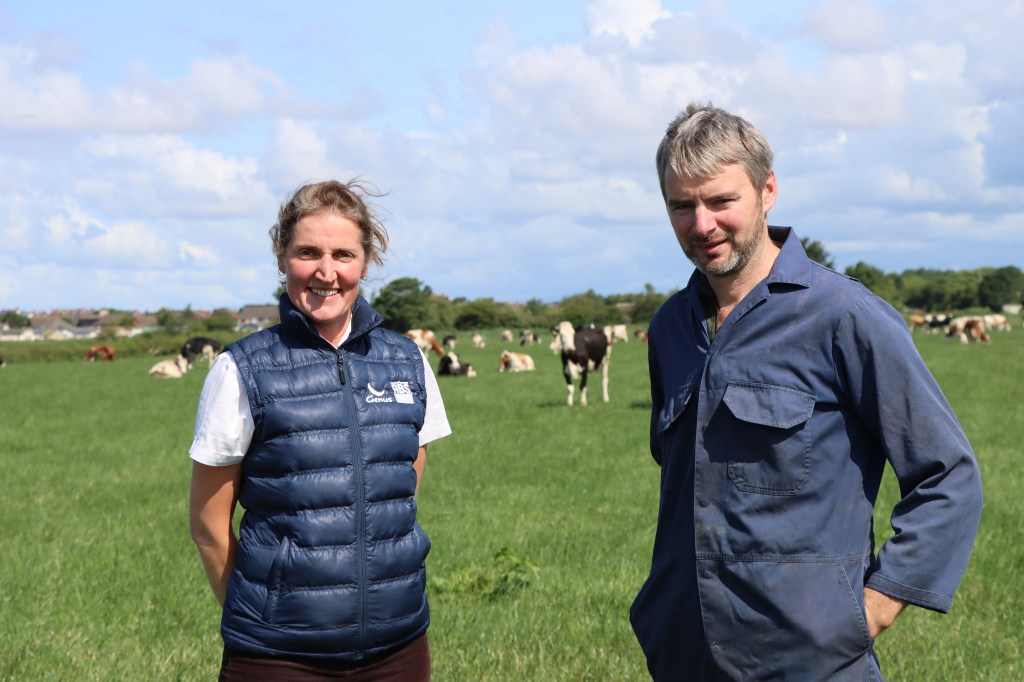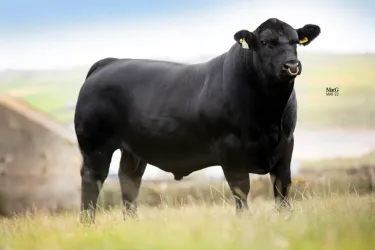Family based in the Morecombe countryside have been utilising the crossbreeding approach for almost 20 years.
White Lund Farm is home to the Birkett family who have operated the land for over five generations.
The farm spreads across 800 acres and holds 350 dairy cows and 53 dairy heifers. Mark Birkett grew up on this farm with his mother and father who still work alongside each other every day.
Why opt for a crossbreeding strategy?
This all-year-round calving herd uses crossbreeding to gain the most-desired traits (hybrid vigour) of different breeds. Following a rotation of Fleckvieh, Norwegian Red and Holstein, the family have been successful in breeding healthy, robust and high-production animals, with small stature and minimal health issues.
Head of operations, Mark said: “Crossbreeding makes more money, easier money. The cows look after themselves, they have less problems, no twisted stomachs and few mastitis issues in the winter. They are healthier cows.
“There’s a big misconception out there that if you crossbreed, you’re going to lose loads of milk. But it’s the fact that your cows are healthier, get in calf better, are calving more regular and sticking around longer to be mature cows. We’ve actually gained milk from when we were Holstein.”
The Lancashire-based farm originally only used Holstein genetics and it wasn’t until what Mark and his father saw in the Pro-Cross trials in the US, featuring the Montbeliarde breed, that they chose to give crossbreeding a go.
It took them some time to figure out exactly which breeds would best suit their system. Starting with Montbeliarde, they later opted for Norwegian Red and Fleckvieh with Holstein.
The Birketts family have now been crossbreeding for over 17 years and have never once looked back.
How does crossbreeding impact the production of cows?
Operating on targets supplied by their Arla 360 contract, each animal in the herd brings in an average 9000l of milk per year, with 4.4% fat and 3.6% protein.
Crossbreeding has allowed Mark to breed strong and healthy cows thanks to the genetics of both Norwegian Red and Fleckvieh, which is perfect for their Arla 360 contract which provides businesses with extra points for low casualties.
Mark explained: “If we had pure Holsteins, we would have a higher casualty rate. With our crossbred herd, we don’t have cows doing splits or anything. They’re stronger and have more power to get up and down.”
When selecting which sires to breed from, Mark examines the mammary scores, temperament and milk solids due to Arla’s requirements. He says he doesn’t have a focus on yield currently because it’s already up to their high standard.

Fertility and crossbreeding cows
When it comes to crossbreeding, the fertility of animals can depend on a range of factors, including the breeds used. Mark uses Norwegian Red, which is famous for its outstanding fertility performance, as well as Fleckvieh and Holstein, which are also known for their fertility.
Four years ago, Mark decided to give Reproductive Management Systems a go in hopes of further improving his herd’s fertility. Previously, Mark had always artificially inseminated his animals by himself.
Once his RMS Specialists began monitoring and inseminating his herd, he was blown away by how many cows they were serving, compared to how many he used to serve himself. It became clear to Mark then that he had been missing heats and was pleased to have brought in RMS.
Having the responsibility of servicing being handed over to his RMS Specialists has allowed Mark more time to focus on other farm jobs and has allowed him to relax. He said: “RMS is fully automated, you can go on holiday and they’ll still be artificially inseminated.”
The pregnancy rate of White Lund Farm’s herd now stands at 31.1%, compared to just 20% previously.
Since Mark likes his cows to be out at grazing as often as possible, his RMS Specialist, Richard, visits his farm at 6am during milking time so no animal gets missed.
Crossbreeding hasn’t only meant that fertility is good on the farm, but also calving ease and other factors. Mark added: “I very rarely pull a calf.”
To give his herd the optimal chance of great fertility, he breeds his cows to RedX Norwegian Red sexed semen and Sexcel Holstein sexed genetics. Using sexed genetics means more profit for the family since little-to-no bull calves will be born, maximising the genetic potential of the females in the herd.
What are the goals of White Lund Farm?
Ultimately, Mark said he is seeking an easy life, one where the cows look after themselves and require little intervention.
Crossbreeding has strongly supported this desire of Mark’s, as the genetics in his herd prevent the animals from being lame or ill. They have great mobility scores, with only two out of the whole herd scoring a three.
In terms of management, Mark advises others to ‘keep things simple.’ His family split their cows into two groups during the winter season. One group for high production cows and one group for lower production animals.
Those in the high group are fed maize (produced on the farm) and grass at a 50/50 ratio. The cows in the lower group are fed silage. Dry cows are fed haylage.
Their milk from forage is currently 4,500l, which is 50% of their overall production.
Moving forward, Mark wants to improve the efficiency of the herd and get better at what they do.
If you want to adapt to a successful crossbreeding strategy, one which incorporates the best traits to match your system and goals, contact your local breeding advisor today, or visit our website to learn more.






